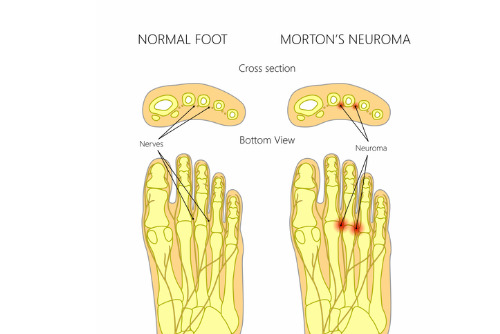Neuromas
This article does not constitute as medical advice.
If you are experiencing symptoms of neuromas, contact your doctor or make an appointment.
This article does not constitute as medical advice.
If you are experiencing symptoms of neuromas, contact your doctor or make an appointment.
A ‘pinched nerve’ or a nerve tumor is called a neuroma. This painful condition occurs when the tissue surrounding the nerves in the toe area thickens. As a result, the tissue rubs against the nerves and irritates them. Furthermore, patients tend to feel this numbness or pressure between the third and fourth toes.
There are no definite causes for the formation of a neuroma. However, some factors may contribute to their growth, such as putting repetitive pressure on the ball of the foot. Common causes of this condition include:
Patients describe this condition as feeling excruciating pain or numbness around the toe area. Common reports include:
If you feel that you have this nerve condition, you should contact your podiatrist, who can examine or use imaging on your foot. In addition, they will recommend a treatment that is best for you, including:
